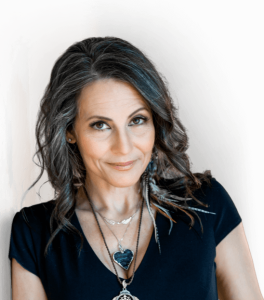When we left off…
(If you haven’t already, read Part One here.)
I had eaten through my savings and incurred a hundred thousand dollars in debt by selling my law firm to the wrong person, joining a $100,000 mastermind and then having to take back the firm and run it out of my savings and credit.
What I skipped over was 2007 when I had a $100,000+ tax bill that I didn’t have the savings to pay.
2006 was the first year my law practice made a million in revenue, and I didn’t know anything about taxes or financial systems back then. I know, dumb, right?!?
I was a lawyer and should have known better.
But I didn’t.
Most lawyers are clueless when it comes to such things. They don’t teach us about taxes or financial systems for solo/small practice entrepreneurs in law school. Sure, I graduated first in my class and got all sorts of awards in my tax classes, but that was tax as applied to big corporations.
Frankly, I had the idea that none of that applied to me as a small fish.
Well, I was wrong. And I paid for it.
Fortunately, back in 2007, borrowing money was as easy as your signature on the dotted line, if you had a good credit score, which I did.
I had already borrowed money to build out my law practice, and doing it the second time around was fairly easy. The first time I filled out the application for a business loan (back in 2004 in the early days of starting my law practice), I felt tremendous shame, guilt and fear. I was certain I would get turned down.
But, I didn’t. They gave me what I asked for, $50,000. Later on, I went back and increased that to $100,000 and wished I would have just asked for more to begin with.
So, by the time I was taking out the loan to pay my taxes in 2007, I was old hat at loan applications and signing on the dotted line. It didn’t phase me.
By the time I got to 2009, I was already about $300,000 in debt between the taxes, the mastermind, and the sale of the law firm fiasco, but I was holding it together, paying about $20,000 in debt payments each month. The money was coming in and I was holding it together.
 In September of that year, things started to fall apart.
In September of that year, things started to fall apart.
I participated in my first ayahuasca medicine journey and had the most beautiful experience. I saw a vision of harmony, peace and connection. Over the following few weeks, I fell into a painful gap as I realized how out of harmony my life was.
I was working so hard and it wasn’t much fun. There was a lot of internal conflict in my businesses, and truthfully, in me as well.
What I didn’t know at the time was that there was a part of me that had been hidden away, lock, stock and barrel.
Today, I know her as Ali Shanti. But, back then, she would just show up in awkward ways, like on my blog where I wrote deeply personal posts and my bio was a mish-mash of the vision I had of a girl who lived in Boulder, was a midwife and had dreadlocks and the girl I knew and had already been who graduated first from Georgetown law and built million dollar businesses.
And then my team would tell me — “Alexis, you can’t say that, Alexis, you can’t write that, Alexis, you can’t wear that, Alexis, you can’t do that. You’ll hurt the business!”
Plus, my team members were constantly fighting amongst themselves and then coming to me with their dramas, pointing fingers and blaming each other for anything and everything. I can see now how it was my leadership that created and perpetuated that reality, but at the time I didn’t know why it was happening and it just sucked.
Top that off with a stark realization that by appearing on TV as a legal expert to gossip about celebrities like Tiger Woods and Michael Jackson I was making a negative contribution to the world, and I had to make some kind of a massive shift.
January 1, 2010, I packed up two Uhauls, the kids, my ex-husband, my boyfriend, two assistants, our dog, two cats, and the snake and we were off to Colorado.
I thought it would change everything. And, it did. But not quite the way I expected.
>>Read the next installment of this series here.
Stay tuned for the rest of the story in the upcoming installments of this series, How Alexis Neely Ended Up in Bankruptcy, where I’ll be discussing where the rest of the debt came from and how I was able to rebuild so quickly and easily. And keep an eye out for my books “Financial Liberation” and “You Are Not Your Credit Score”.

 To make matters worse, that hit came directly on the heels of having made a $100,000 commitment (with $87,000 put on credit) to join Ali Brown’s Diamond Mastermind program. Had I known Art was going to give me back the firm, I never would have joined the Mastermind.
To make matters worse, that hit came directly on the heels of having made a $100,000 commitment (with $87,000 put on credit) to join Ali Brown’s Diamond Mastermind program. Had I known Art was going to give me back the firm, I never would have joined the Mastermind.







